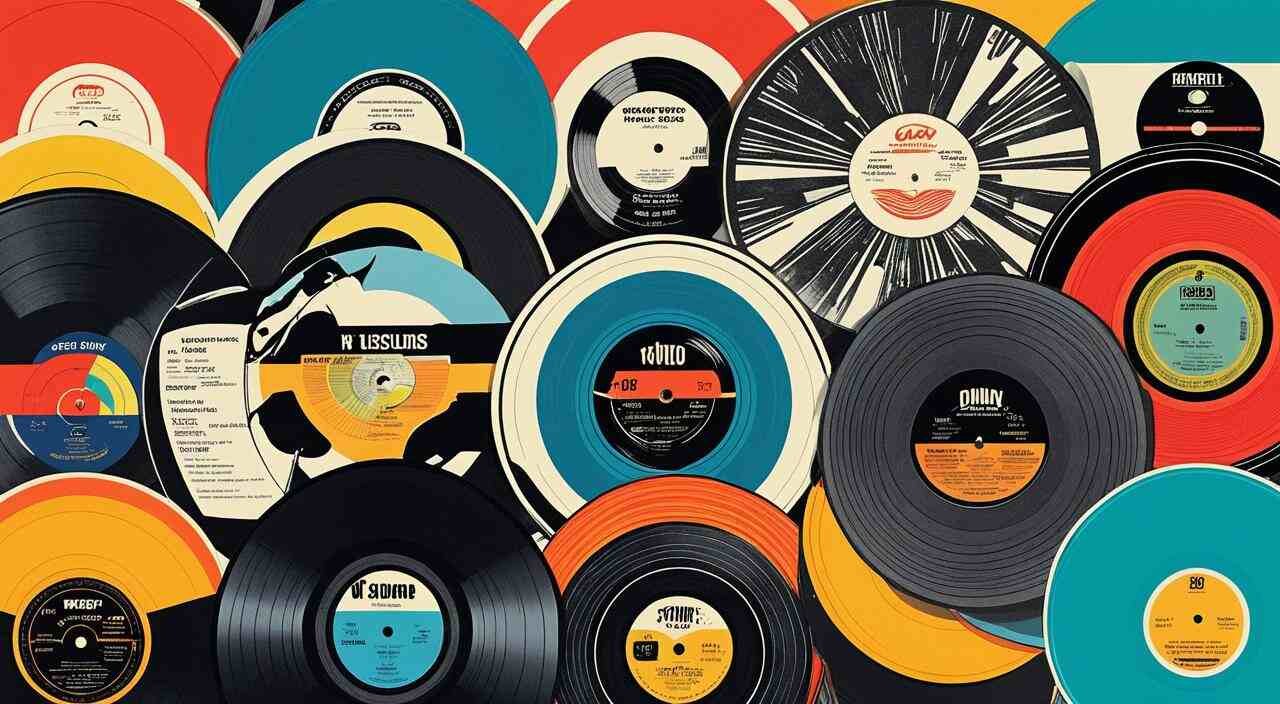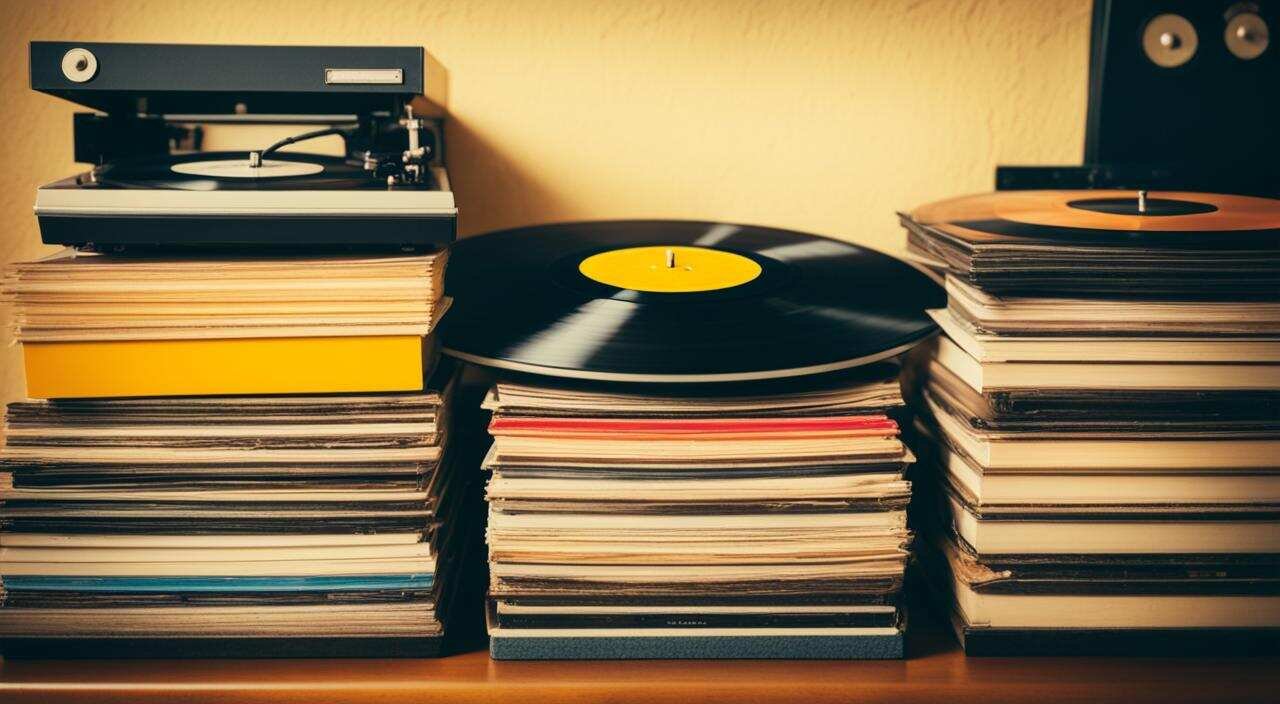Vinyl records have stood the test of time, captivating music enthusiasts with their warm, nostalgic sound. But how do these analog wonders actually work? In this section, we will unravel the mysteries of vinyl record technology and delve into the fascinating world of vinyl playback.
At their core, vinyl records are primarily composed of a circular disc made from polyvinyl chloride (PVC). The disc is imprinted with spiral grooves that contain the audio information, allowing the stylus to track and reproduce the sound. Understanding the mechanics behind this process is key to appreciating the magic of vinyl records.
When you place a vinyl record on a turntable, the stylus (also known as the needle) is lowered onto the surface of the disc. As the record spins, the stylus follows the grooves, translating the physical movements into vibrations. These vibrations are then transformed into electrical signals that can be amplified and played through speakers, producing the sound you hear.
But the journey from grooves to sound involves more than just the stylus. It requires a finely tuned system of interlocking components, such as the turntable motor, tonearm, cartridge, and amplifier, all working harmoniously to faithfully recreate the recorded music.
Key Takeaways:
- Vinyl records are composed of PVC discs imprinted with spiral grooves that contain the audio information.
- The stylus tracks the grooves, translating the physical movements into vibrations.
- These vibrations are transformed into electrical signals that can be amplified and played through speakers.
- A well-calibrated system of turntable components ensures faithful sound reproduction.
- Understanding the intricacies of vinyl playback enriches our appreciation of this timeless format.
The Evolution of Vinyl Record Technology
Vinyl records have a rich history that dates back to the late 19th century. Thomas Edison’s phonograph and Emile Berliner’s gramophone were early inventions that paved the way for modern vinyl record technology. These groundbreaking innovations laid the foundation for the beloved vinyl format music we know today.
Thomas Edison, the renowned American inventor, introduced the phonograph in 1877. This device used a cylindrical wax cylinder to record and reproduce sound. Although it was a significant advancement in audio recording, the cylindrical format was limited in terms of durability and ease of use.
Emile Berliner, a German-American inventor, improved upon Edison’s phonograph by patenting the gramophone in 1887. The gramophone featured a flat disc format, known as a record, that was made from shellac. This development marked a milestone in the evolution of vinyl record technology.
Over the years, vinyl record technology continued to evolve and improve. In the early 20th century, advancements in record pressing and manufacturing allowed for mass production of vinyl records. The introduction of microgrooves in the 1950s further enhanced the audio quality and durability of vinyl records.
Despite the rise of digital music formats in recent decades, vinyl records have experienced a resurgence in popularity. Audiophiles and music enthusiasts are drawn to the warm, nostalgic sound and tactile experience that vinyl provides. The enduring appeal of vinyl record technology stands as a testament to its enduring legacy in the world of music.
How Do Vinyl Records Work
Vinyl records are intricate devices that capture and reproduce sound through the grooves etched into their surface. In this section, we will explore the anatomy of a vinyl record, including its composition, grooves, and labels.
Anatomy of a Vinyl Record
A vinyl record is typically composed of polyvinyl chloride (PVC), a durable and flexible material. The record is circular in shape, with a diameter of 12 inches for LP records or 7 inches for singles. It is thick and heavy, providing stability during playback.
The surface of a vinyl record contains grooves that spiral from the outer edge towards the center. These grooves are the key to storing and reproducing the sound recorded on the record. The grooves vary in depth and width, which affects the quality and volume of the sound produced during playback.
Additionally, the center of a vinyl record features a spindle hole that allows it to be placed onto a turntable’s spindle. This ensures that the record spins at a consistent speed of 33 1/3, 45, or 78 revolutions per minute (RPM), depending on the format and intended playback.
The Role of the Stylus in Sound Reproduction
The stylus, also known as the needle, plays a crucial role in reproducing the sound recorded on a vinyl record. It is attached to a tonearm, which is responsible for positioning the stylus onto the grooves.
As the vinyl record rotates on the turntable, the stylus moves in the grooves, vibrating and tracing the changes in depth and width. These physical movements are then transformed into electrical signals, which are sent through the tonearm and cartridge to the audio system.
High-quality styluses are essential to ensure accurate sound reproduction and minimize wear on the record. Different stylus shapes, such as conical, elliptical, or microline, offer varying levels of detail and tracking ability, affecting the sound quality and longevity of the record.
The Conversion Process: From Grooves to Sound
The conversion process is the heart of vinyl record playback. It involves the intricate mechanics of the turntable, including the platter, tonearm, and cartridge, working together to read the grooves and transform the mechanical energy into electrical signals that can be amplified and played back as the music we hear.
Here’s a simplified overview of how the conversion process works:
- The turntable’s motor rotates the platter, which holds the vinyl record in place.
- The tonearm, equipped with the stylus, lowers onto the record’s surface.
- The stylus follows the grooves, transmitting the vibrations to the cartridge.
- The cartridge converts the vibrations into electrical signals.
- These electrical signals are then amplified and sent to speakers, producing sound.
The accuracy and precision of these turntable mechanics are crucial for achieving high-fidelity sound reproduction. Proper maintenance and alignment of the components, as well as choosing high-quality equipment, can significantly enhance the vinyl playback experience.
| Key Components of Vinyl Playback | Description |
|---|---|
| Platter | The rotating platform that holds the vinyl record in place and ensures a stable playback speed. |
| Tonearm | The arm that holds the stylus and allows it to track the grooves on the record. |
| Cartridge | The component that houses the stylus and converts the mechanical vibrations into electrical signals. |
Conclusion
Vinyl records have a magical quality that continues to captivate music lovers around the world. The unique sound and craftsmanship behind their creation make them an irreplaceable part of the music industry. By gaining an understanding of how these analog devices work, we can develop a deeper appreciation for the artistry that goes into producing vinyl records.
Whether you are just starting your journey into vinyl or have been a collector for years, the world of vinyl records holds a special place in your heart. The experience of playing a vinyl record, with its warm tones and distinct crackles, is unmatched by digital formats. It allows us to connect with the music in a way that is tangible and authentic.
From the intricacies of the grooves and the role of the stylus in sound reproduction, to the complex mechanics of turntables, vinyl records are a testament to the ingenuity of their creators. The process of transforming physical movements into electrical signals requires precision and skill, resulting in an audio experience that is truly one-of-a-kind.
So whether you are an audiophile seeking the purest sound or simply someone who appreciates the nostalgia and charm of vinyl, let the world of vinyl records continue to mesmerize and inspire you. Explore the vast catalog of artists and genres available on vinyl and immerse yourself in a musical journey that transcends time and technology.
FAQ
How do vinyl records work?
Vinyl records work by capturing and reproducing analog sound through grooves etched into their surface. When a stylus (needle) is placed on the record, it follows the grooves and translates the physical movements into electrical signals. These signals are then amplified and played back as music.
What is vinyl record technology?
Vinyl record technology refers to the scientific principles and mechanics behind the creation, playback, and reproduction of vinyl records. It encompasses the composition of vinyl records, the grooves, the stylus, and the conversion process that translates grooves into electrical signals.
How does vinyl playback work?
Vinyl playback involves a turntable with a rotating platter, a tonearm with a stylus, and a cartridge that contains a magnet and coils. As the record spins, the stylus tracks the grooves, vibrating with the changes in the grooves. These vibrations are converted into electrical signals by the magnetic cartridge, then amplified and played through speakers.
What is the anatomy of a vinyl record?
A vinyl record is composed of a circular flat disc made of vinyl. The surface has grooves that spiral from the outer edge to the center, containing the recorded audio. The record also has labels on both sides that indicate the artist, album title, and tracklist.
What is the role of the stylus in sound reproduction?
The stylus, also known as the needle, is attached to the tonearm of a turntable. It is responsible for tracking the grooves on the vinyl record’s surface. As the stylus moves along the grooves, it picks up the physical movements and vibrations, which are then converted into electrical signals that can be amplified and played through speakers.
How does the conversion process work in vinyl record playback?
The conversion process is the heart of vinyl record playback. As the turntable spins the vinyl record, the stylus tracks the grooves, converting the physical movements and vibrations into electrical signals. These signals are then amplified by the turntable’s built-in phono preamp or an external amplifier and played through speakers, producing the music we hear.








Leave a Reply